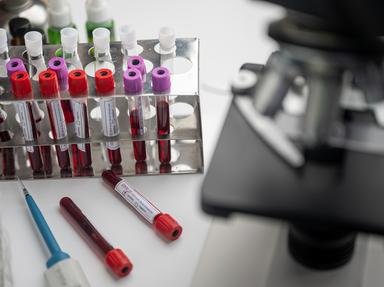Quiz Answer Key and Fun Facts
1. Which one of these macromolecules is the most complex of all macromolecules?
2. What is the only macromolecule whose monomers don't undergo dehydration to become long-chain polymers?
3. Give the single letter notation for any one of the polar neutral amino acids.
4. True Or False: A glycoprotein is mostly carbohydrate, and has very little protein.
5. What enzyme do cows have that allows them to digest cellulose?
6. What type of non-covalent interaction contributes most to the stabilization of the secondary structure of proteins?
7. Oxidoreductases, isomerases, and lyases are three of the six classes of enzymes.
8. Choose the correct description for an enzyme that has its associated coenzyme/cofactor.
9. True or False: Transition states are the formed structures (which don't include the product) in any given reaction. For example, in reaction A ----> B ----> C, B would be a transition state.
10. Name the type of double bond that exists in any normal unsaturated or polyunsaturated fatty acid.
Source: Author
knight7se7en
This quiz was reviewed by FunTrivia editor
crisw before going online.
Any errors found in FunTrivia content are routinely corrected through our feedback system.
